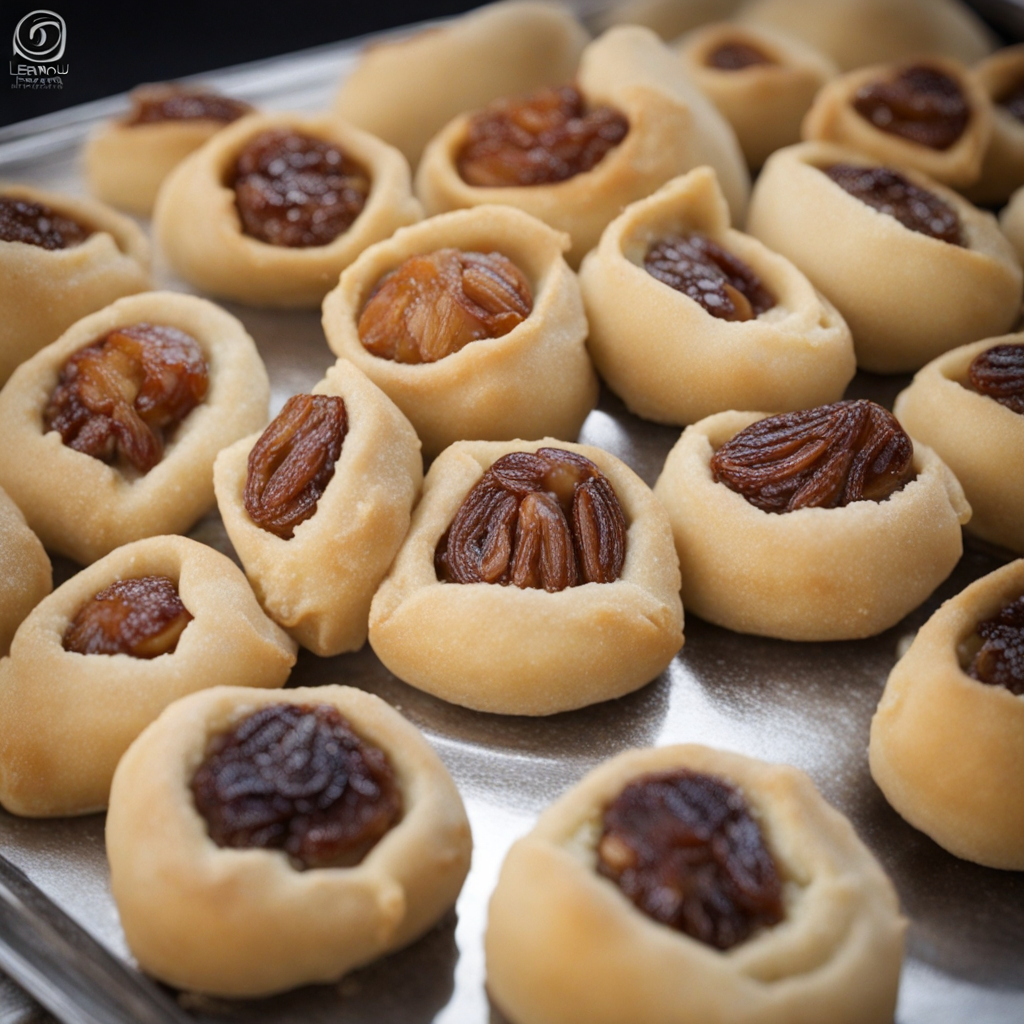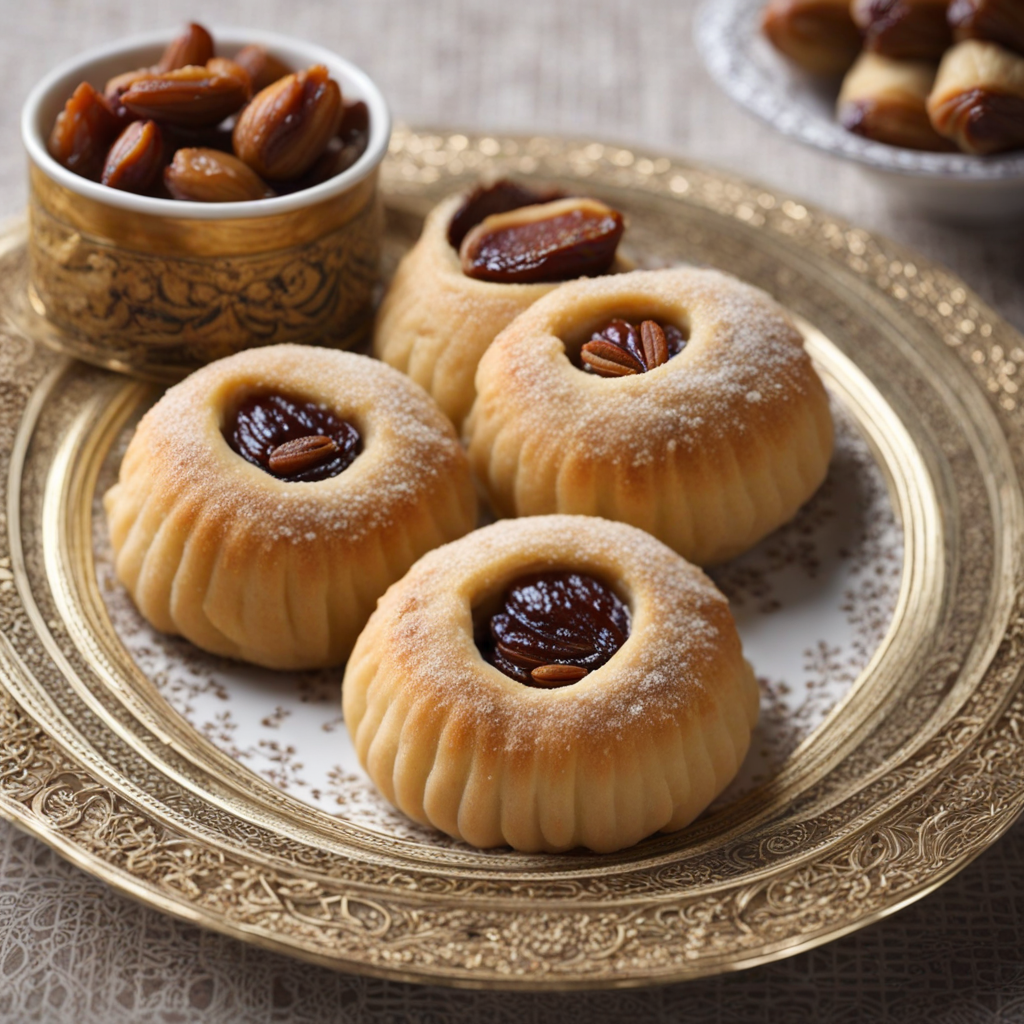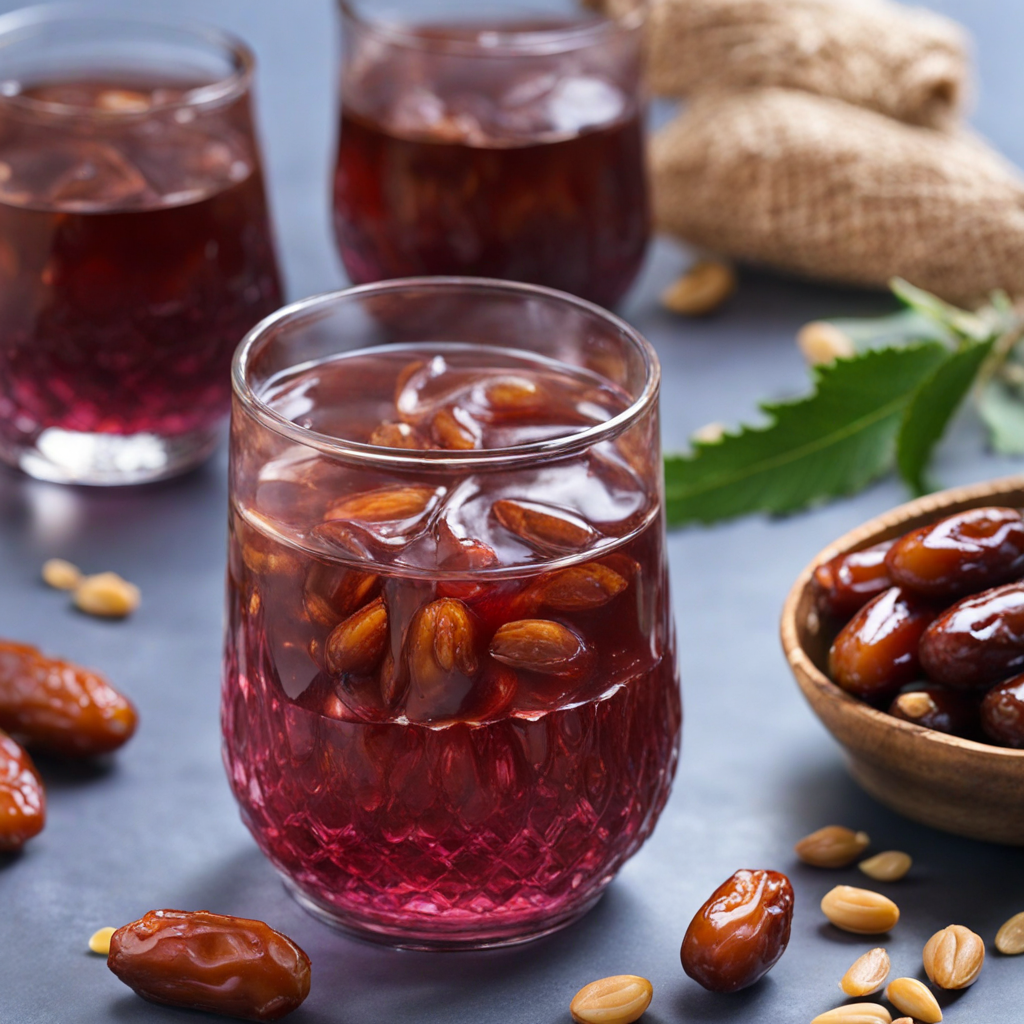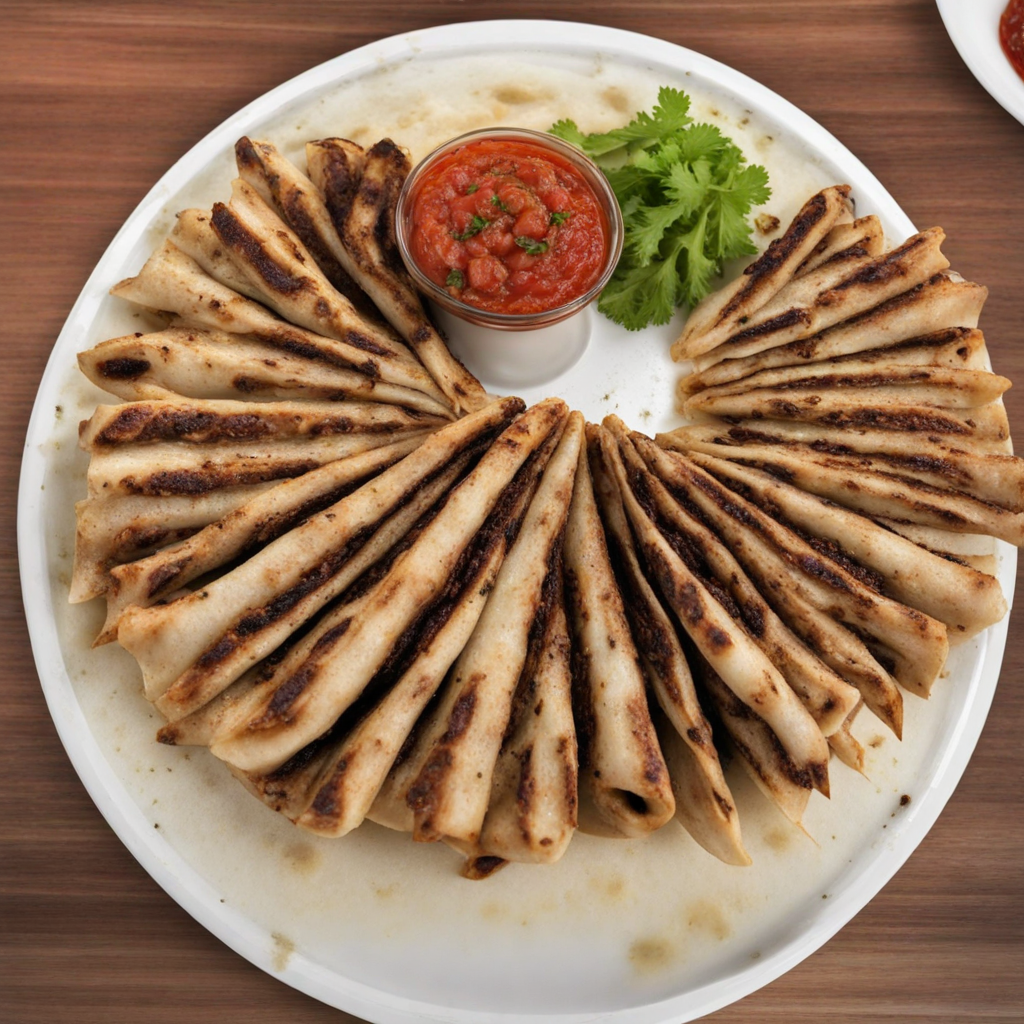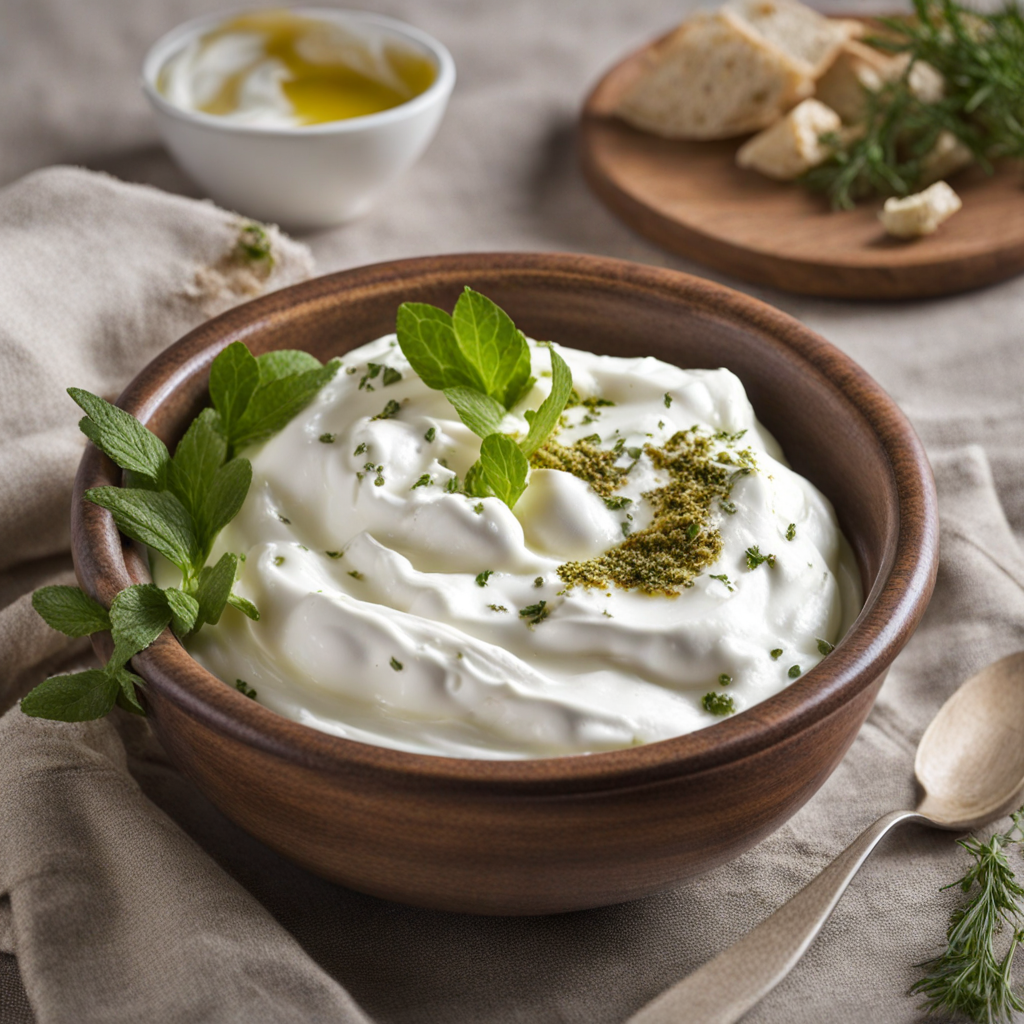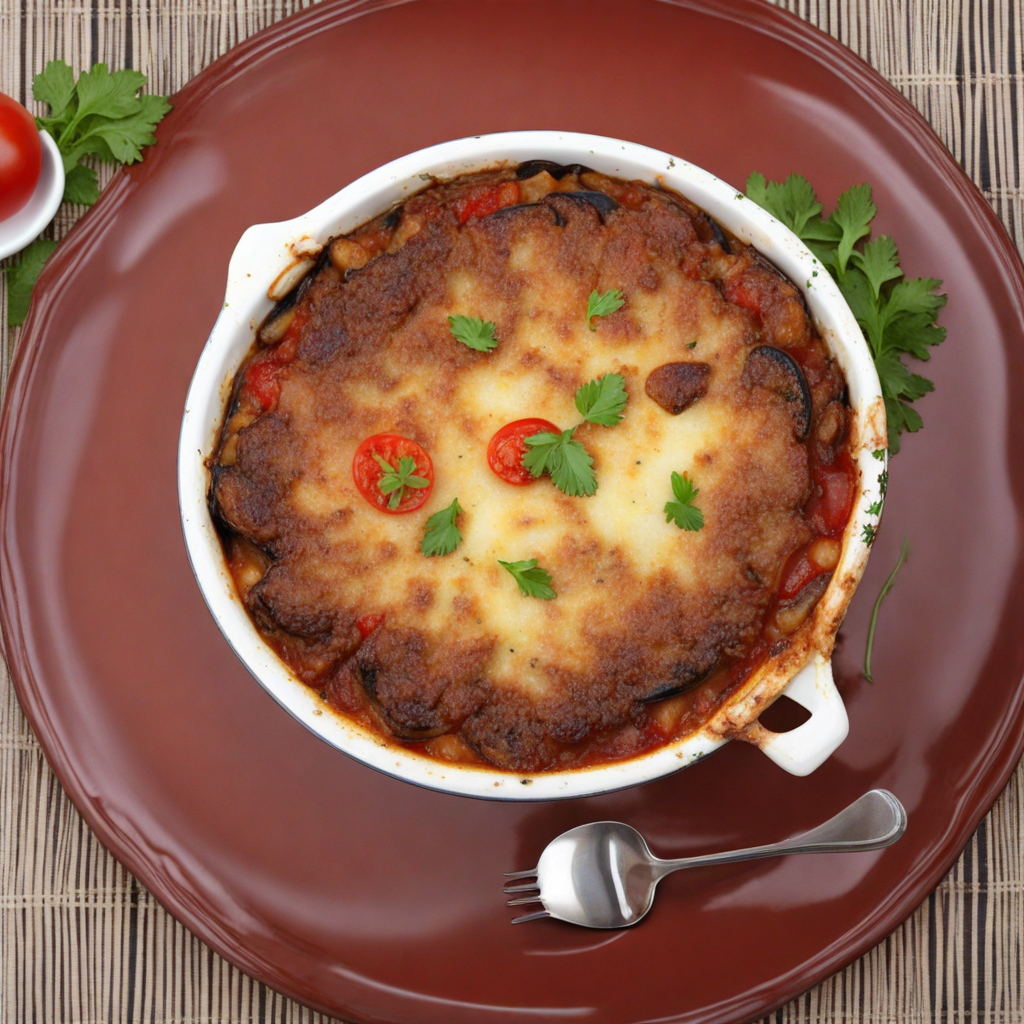Ma'amoul
Ma'amoul is a traditional Lebanese pastry that encapsulates the essence of Middle Eastern flavors, offering a delightful journey for your taste buds. These small, intricately shaped cookies are typically made from a buttery semolina or flour dough, which is lovingly kneaded and rested to create a tender, melt-in-your-mouth texture. The dough itself is subtly sweet, allowing the rich fillings to shine through. Ma'amoul is often shaped using decorative wooden molds, giving each piece a unique and artistic flair that reflects the care and craftsmanship behind this beloved treat. What truly sets Ma'amoul apart is its delectable filling, which can vary widely, but the most popular choices include dates, walnuts, and pistachios. The date filling is naturally sweet and caramel-like, providing a luscious contrast to the crumbly exterior. In contrast, the nut fillings bring an earthy richness and a delightful crunch, often enhanced with fragrant spices such as cinnamon or nutmeg. Each bite reveals a harmonious blend of flavors and textures, making Ma'amoul a satisfying indulgence that is perfect for any occasion. Traditionally enjoyed during festive occasions and family gatherings, Ma'amoul holds a special place in Lebanese culture. These cookies are often dusted with powdered sugar, adding an elegant touch to their presentation. Whether served with a cup of Arabic coffee or during celebrations like Eid or Easter, Ma'amoul invites you to savor the warmth of tradition and the joy of sharing delicious food with loved ones. Each cookie is a testament to the rich culinary heritage of Lebanon, promising an unforgettable taste experience that beckons you to explore more.
How It Became This Dish
Origin of معمول معمول, a traditional Middle Eastern pastry, has its roots deeply embedded in the rich culinary tapestry of the region, particularly in Lebanon. The origins of معمول can be traced back to ancient times, with some historians suggesting that it dates back to the Roman Empire. These pastries were likely influenced by the cultural exchanges that happened along trade routes. The name "معمول" itself is derived from the Arabic verb "عَمَلَ" (to make), reflecting the craftsmanship involved in its preparation. The earliest versions of معمول were simple, made from basic ingredients like flour, water, and dates. It was a humble treat, often prepared for special occasions and religious celebrations. The use of nuts, such as pistachios and walnuts, began to emerge as the pastry evolved in response to the availability of local ingredients and the cultural influences of neighboring regions, such as Persia and Turkey. Cultural Significance In Lebanon, معمول holds a place of great cultural and social significance. It is particularly associated with festive occasions, such as Eid al-Fitr, Easter, and weddings. The act of making معمول is often a communal activity, where families gather to prepare large quantities of these pastries, fostering a sense of togetherness and tradition. The preparation of معمول is not merely a culinary endeavor; it embodies the values of hospitality and generosity that are central to Lebanese culture. During Eid al-Fitr, for example, families prepare special trays of معمول to share with friends, relatives, and neighbors. The act of gifting these pastries symbolizes goodwill and community spirit. It is said that the sweeter the معمول, the greater the affection between the giver and the receiver. This tradition highlights the importance of food in building social bonds and maintaining relationships within the community. Ingredients and Preparation Traditionally, معمول is made from semolina or fine flour, which is mixed with ghee or butter to create a rich, crumbly texture. The filling is a crucial aspect of the pastry, and it can vary widely depending on regional preferences and family recipes. Common fillings include dates, nuts, or a combination of the two, often flavored with spices like cinnamon or orange blossom water. The preparation of معمول involves several steps, including mixing the dough, preparing the filling, and molding the pastries. One distinctive feature of معمول is its intricate designs, which are often created using a special mold known as a "مَعمَل." These molds are beautifully crafted, often depicting geometric patterns or floral motifs that reflect the artistry of Lebanese craftsmanship. This attention to detail not only enhances the visual appeal of the pastries but also signifies the care and dedication that goes into their making. Regional Variations While معمول is widely recognized across the Middle East, each region has developed its unique variations. In Lebanon, the traditional fillings of pistachios and walnuts are particularly popular, whereas in Syria, you might find fillings that include rosewater or other local spices. In Palestine, the use of sesame seeds as a filling has grown in popularity, while in Egypt, the incorporation of honey into the dough adds a different flavor profile. These regional variations highlight the adaptability of معمول to local tastes and preferences, showcasing how a single culinary tradition can evolve while still retaining its core identity. The significance of these variations is also evident during cultural exchanges, where families might adopt elements from each other's recipes, further enriching the communal experience of making and sharing معمول. Modern Developments In recent years, the popularity of معمول has transcended its traditional associations, leading to new interpretations and modern twists on the classic recipe. Bakeries across Lebanon and the wider Middle Eastern region now offer a variety of flavors and fillings, including chocolate, caramel, and even vegan options, catering to contemporary tastes and dietary preferences. The rise of social media has also played a pivotal role in reviving interest in traditional foods like معمول. Home cooks and professional chefs alike share their recipes, tips, and creative presentations online, bringing the art of making معمول to a global audience. This resurgence has sparked a renewed appreciation for the craftsmanship involved in creating these pastries, encouraging younger generations to engage with their culinary heritage. معمول in the Diaspora The Lebanese diaspora has played a crucial role in keeping the tradition of معمول alive beyond the borders of Lebanon. In countries like the United States, Canada, and Australia, Lebanese communities have established bakeries that specialize in traditional pastries, including معمول. These establishments not only serve to satisfy cravings for authentic Lebanese flavors but also act as cultural hubs, where younger generations can connect with their heritage. In these diasporic contexts, the preparation of معمول often becomes a way to remember and celebrate cultural roots. Families might gather during significant holidays to make and share these pastries, reinforcing their identity and passing down culinary traditions to the next generation. The act of making معمول thus serves as a bridge between past and present, allowing families to maintain their cultural ties while adapting to new environments. Conclusion معمول is more than just a pastry; it is a symbol of Lebanese culture, tradition, and community. Its journey from ancient origins to modern interpretations reflects the resilience and adaptability of culinary practices in a rapidly changing world. The intricate designs, rich flavors, and communal spirit surrounding the making of معمول encapsulate the essence of Lebanese hospitality and the importance of food in forging connections among individuals and communities. As it continues to evolve, معمول remains a cherished part of Lebanon's culinary heritage, ensuring that its story is passed down through generations.
You may like
Discover local flavors from Lebanon


